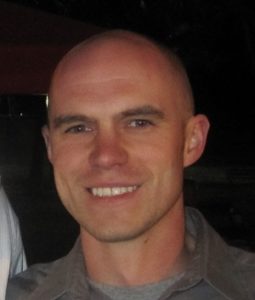By Garrett Smith
Six months ago, it sounded like a good idea. It would be a “feather in our cap.” We provide high quality products to our customers, so this would just be an exercise in documenting what we do… right? It turned out to be a fairly daunting and time-consuming task. The process opened our eyes to improvements in how we do things. MIL C4IS was able to accomplish the certification in a short time due to a true team effort from many excellent employees, a little outside help, and full support from leadership.
We started talking about ISO 9001:2015 because we wanted MIL to become a Commercial Solutions for Classified (CSfC) trusted integrator. CSfC is a program led by NSA that provides guides for layered security solutions that can be implemented using commercial off the shelf equipment. A certified quality management system was a requirement for obtaining CSfC trusted integrator status.
Now that a requirement for ISO was established, it was time for a little research. We convened meetings with leaders and key personnel at MIL C4IS and determined that we had a good head start. First, the certification had been sought back in 2007 but never obtained. There were documents, notes, and other artifacts to reference. Secondly, MIL’s C4IS Deputy Director, Harvil Jenkins, had developed a quality management plan but it needed to be updated and fully implemented. Thirdly, we had a sister division in Charleston that had achieved ISO certification for their Human Resourcing functionality that could provide documentation and field our questions.
Research complete, how do we go after this? We knew we needed to update documentation to reflect the ISO 9001:2015 standard, as opposed to the 2008 version. We held meetings where we reviewed and updated certain quality management procedures every two weeks. However, with sponsored project work taking priority, it seemed that this process could be drawn out for a very long time. Additionally, the requirements laid out by the standard are cryptic in areas and it was hard to say that we were developing documentation that could withstand and pass an audit. We needed some help!
We enlisted the help of a company named AQCES International. They came to the MIL C4IS facility and reviewed the space, our processes, and existing documentation. We provided them our draft quality manual and the process documents we’d been working internally. Then AQCES came back for several days of intense sessions with our experts to finalize all of the standard operating procedures, forms, and other documents.
Once documents were complete, we set to work implementing the processes and using the updated forms. We held meetings and sent out e-mail to inform employees on what to expect. Then we scheduled the registration audit! While this was scary, and we didn’t have much runtime on the system, our consultant ensured us that the audit would focus more on our documentation and less on implementation results (those would be reviewed in follow-on periodic audits).
Our auditor came to the facility for three days in the beginning of September and reviewed everything. He toured the facility and held meetings with critical personnel. There were tense moments and findings were captured that needed to be addressed. In the end, he found our system to be sound, and certified it to the ISO 9001:2015 standard!
While this is a huge success (and relief), there’s still a great deal of work to be done. We need to be vigilant about our implementation and tracking. A key component of the system is to constantly monitor and improve, and in six short months we’ll be reviewed again. We can now apply to NSA for the CSfC certification as well.
In the end, it was a positive experience and one that I strongly believe will help the MIL C4IS Sector. For me, I learned a lot more about quality management and procedures than I ever thought I would. More than that, the process allowed me to interact closely with a lot of great people. I would specifically like to thank Ricky Chesser and Lindsay Frazier for all of their hard work on this effort. I’m excited to continue the adventure with such a great team!
About the Author
 Mr. Smith is a senior systems engineer with in depth experience in communications systems projects for the Department of Defense. He currently leads engineering efforts for one of MIL’s NAVAIR contracts where he focuses on performance management, cost and schedule development and tracking, resource management, and risk management. He also leads systems engineering activities including requirements collection and analysis, system design and integration, testing, delivery, and system lifecycle sustainment.
Mr. Smith is a senior systems engineer with in depth experience in communications systems projects for the Department of Defense. He currently leads engineering efforts for one of MIL’s NAVAIR contracts where he focuses on performance management, cost and schedule development and tracking, resource management, and risk management. He also leads systems engineering activities including requirements collection and analysis, system design and integration, testing, delivery, and system lifecycle sustainment.
